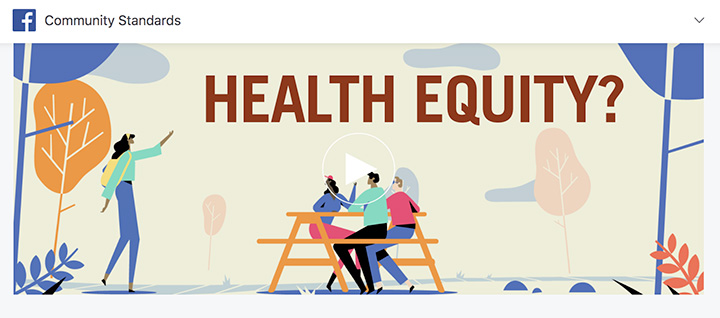Facebook just release their new Community Standards outlined here in this link. This is most likely a response to Mark Zuckerberg’s Congressional Hearings early April 2018. One thing that I took away from these proceedings, a critique on the necessity for users to have easy access to their Privacy Settings and also making Facebook’s Terms of Service (ToS) more consumer friendly.
During these proceedings, I called my partner Reed Smith and predicted that Facebook would take their Terms of Service (ToS), rewrite, and make it more consumer facing. Healthcare organizations should be on notice, this is a huge opportunity for growth across the healthcare industry.
We have spent years and years working with organizations, including healthcare, insuring they create a set of community standards (rules, guidelines, etc) that is not only consumer facing on their website and also easy to understand.
I have questions…so many questions:
- Is posting a privacy policy enough?
- If you have built a community on social media, should you have rules? Should these rules be called rules?
- If you have a set of community standards outlining how you expect the community to interact, should the language of the community rules empower equity?
- Does the use of terms rules and guidelines contradict the idea these communication tools do not embrace health equity?
If you read Facebook’s Community Standards introduction, you will find language about equity and inclusion.
Every day, people come to Facebook to share their stories, see the world through the eyes of others, and connect with friends and causes. The conversations that happen on Facebook reflect the diversity of a community of more than two billion people communicating across countries and cultures and in dozens of languages, posting everything from text to photos and videos.
We recognize how important it is for Facebook to be a place where people feel empowered to communicate, and we take our role in keeping abuse off our service seriously. That’s why we have developed a set of Community Standards that outline what is and is not allowed on Facebook. Our Standards apply around the world to all types of content. They’re designed to be comprehensive – for example, content that might not be considered hate speech may still be removed for violating our bullying policies.
The goal of our Community Standards is to encourage expression and create a safe environment. We base our policies on input from our community and from experts in fields such as technology and public safety. Our policies are also rooted in the following principles: Safety, Voice, and Equity.
Did you notice something, the language is framed in a voice of inclusion, where everyone has a voice. And, Facebook outlines three principles that include equity.
Should we as healthcare communicators use this approach inside our community standards for our healthcare organizations? How about public institutions like public colleges?
Sume Ndumbe-Eyoh, MHSc from National Collaborating Centre for the Determinants of Health in Nova Scotia, Canada released the following information in her recently released research entitled “Public health use of digital technology to advance health equity”:
Almost 60% of organizations were reportedly supportive or very supportive of the use of digital technologies. Half of respondents, however, noted the presence of organizational barriers such as blocked social media and websites; restrictive security and privacy policies; limited direct access; complex approval processes; and technological barriers.
Now this is referring specifically to technological barriers inside the healthcare organizations, blocking social media sites for both the public and/or employees.
I wondered, how many hospitals in South Carolina actually have the following:
- Social Media Guidelines
- Social Media Community Guidelines
- Blog Commenting Policies
I found only five health systems in South Carolina with some type of social media community guidelines outlining how they (as a healthcare organization) will use social media and what is expected of the community when engaging on social media.
Here they are:
- Carolinas Healthcare System – https://www.carolinashealthcare.org/about-us/newsroom/social-media-guidelines
- Greenville Health System – https://www.ghs.org/newsroom/socialmedia/
- MUSC – http://academicdepartments.musc.edu/catalyst/archives/2013/8-23socialmedia.htm
- Providence Health – http://www.yourprovidencehealth.com/for-the-community/social-media
- Spartanburg Regional Healthcare – https://www.spartanburgregional.com/news/social-media-guidelines/
All of these healthcare systems, except for Providence Health, use the language “guidelines.” Providence Health uses the term “policy”.
Would you suspect that using the terminology rules or guidelines is an exclusive approach to engaging a community? I would probably submit these rules or guidelines were written a few years ago when most health systems were trying craft and conceptulize their digital communication(s) and social media strategy? As these social media communities inside healthcare systems have grown creating large equitable communities; do you think it is time to rethink and re-imagine how to engage the digital communities at-large?
If health equity and a commitment to inclusion increases across health systems, I wonder if it is time to do the following:
- Create digital communication and social media community guidelines that are accessible from the homepage of the healthcare organizations website.
- Re-imagine the language of these community standards to address health equity, safety, and community voice.
- Re-imagine health organizations’ digital communication and social media strategy to become a health resource to all communities they serve. This includes communities regardless of race, class, ethnicity, disability, and/or geography.
- Open access to social media platforms inside healthcare organizations, so all communities served can access information relevant to their health.
- Begin regular training sessions across the healthcare organization; teaching healthcare professionals best practices when engaging communities on social media. BTW, Mayo Clinic is the leader in this space!
I have so many more questions and I wonder if you do as well?
——
Link to Mark Zuckerberg’s Full Senate Hearing: https://youtu.be/6ValJMOpt7s
Link to Mark Zuckerberg’s Full House Hearing: https://youtu.be/hJdxOqnCNp8

